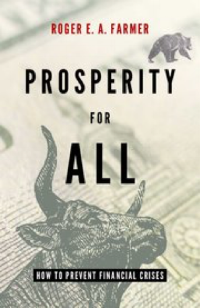We are stuck in a low inflation liquidity trap, caused by the fact that money and short term securities are currently perfect substitutes. The way out of the liquidity trap is to raise the interest rate; an argument that has been called neo-Fisherian in recent blog posts by Stephen Williamson and Noah Smith. Raising the interest rate however, and doing nothing else, will generate a recession; possibly a large and persistent recession. To prevent that from happening, the Treasury must engage in a simultaneous fiscal expansion. That fiscal expansion could be achieved through a money financed transfer to households; it could also be more efficiently achieved through a government guarantee to support asset prices.
A fiscal expansion can occur through infrastructure expenditure, through a tax cut, or a cash transfer to households. And any given expansion can be paid for by printing money or by issuing short-term or long-term government bonds. According to conventional wisdom, it doesn’t matter whether the government borrows by issuing short-term bonds or long-term bonds. Conventional wisdom is wrong as I have shown in a series of books and papers, for example, see here.
Some have argued that the government should build roads and bridges and that this new infrastructure expenditure should be paid for by issuing long-term debt. That argument makes sense. But it is logically distinct from the argument for a fiscal stimulus. Build roads and bridges to support private sector growth; the Northern Powerhouse of George Osborne. And, by all means, pay for these investments by issuing long-term bonds. New projects of this kind should be weighed carefully and a case must be made that they have positive net present value.
Do not build roads and bridges as a temporary stimulus. A better way to prevent the recession that might otherwise occur when the Bank raises the Bank Rate would be an explicit commitment by the Financial Policy Committee of the Bank of England, to support the value of the stock market. This could be achieved by offering to buy or sell shares in an Exchange Traded Fund at a value linked to the performance of the unemployment rate. [1]
The private sector does not typically find the right price for stocks and shares. Animal spirits represent a separate independent fundamental of the economy; they are like technology or preferences. And the state of animal spirits is reflected in the price that households are prepared to pay for stocks and shares.
The role of fiscal policy is to counteract the influence of animal spirits by helping markets to coordinate on a ‘good equilibrium’. In the absence of the direction of the Treasury or the Central Bank, asset markets are often trapped like the proverbial prisoner in the ‘prisoners’ dilemma’ who confesses to avoid the fate that would await him if his partner in crime were to confess first.
My argument is not made lightly. My recent books and articles provide a coherent alternative to the conventional New Keynesian paradigm and I provide empirical evidence that demonstrates a stable link between asset prices and the unemployment rate.
Conventional wisdom argues that the path to higher inflation lies through lowering interest rates. That path is supposed to trigger a demand expansion, higher employment and higher wages and prices. But the link from unemployment to wage inflation, the so-called ‘Phillips Curve’ has not existed since Phillips published his eponymous article in 1958. It was an artifact of the gold exchange standard when monetary policy operated very differently from the way it operates today.
The evidence from twenty years of stagnation in Japan does not inspire confidence in a policy of lowering interest rates further. It’s time for new approach.
You can read more about these ideas in my new book Prosperity for All.
_____________________
[1] A second best fiscal policy, that has a greater political chance of happening in the current climate, is a cash transfer to households paid for by printing money. I would support this policy as a way of preventing a recession; but it is not ideal because it does not correct the problem that assets may be incorrectly priced.








